Impact of COVID on lab-based courses
COVID-19 has brought around a dramatic change in how undergraduate science courses are taught. Homemade videos, zoom breakout rooms, and online labs have become the norm.
The traditional lab set-up isn't designed to meet social distancing requirements or accommodate remote learning situations, leaving many educators looking for alternative solutions that can help them future-proof their course during this uncertain time.

But why are practical labs so important in the first place? And how can educators adapt their traditional lab set-up to suit both face-to-face and remote learning environments?
Thinking of labs in a different way...
First, it’s important to understand the value of face-to-face teaching labs and the benefits they provide from both a student and educator perspective.
One way that we can address this, is to think of practical labs in terms of their physical, social, and psychological aspects as highlighted in the figure below.
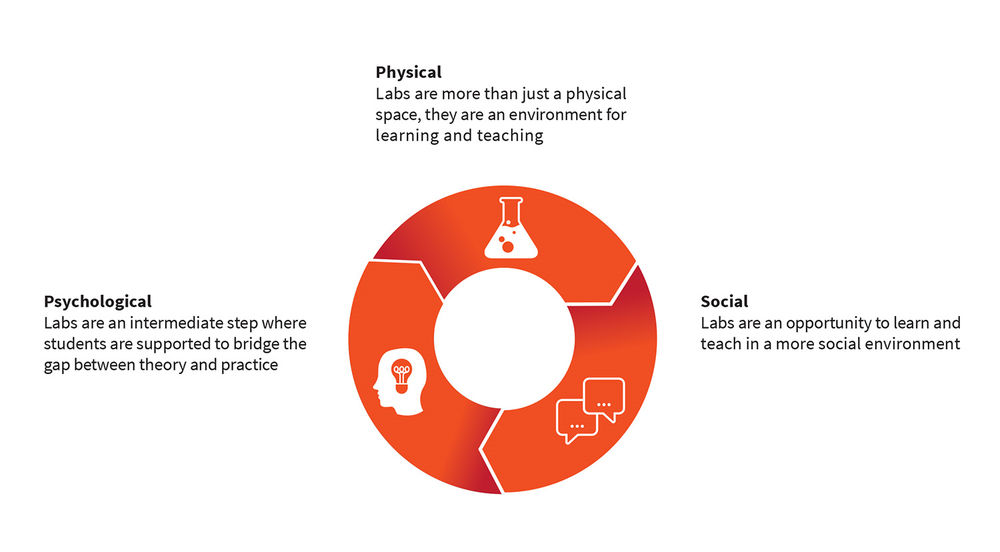
Physical aspects of a lab:
Labs are more than just a physical space; they are an environment for learning and teaching. For students, they provide an alternative to the conventional classroom with clean, uncluttered workspaces, housing all the equipment and resources they need to perform experiments and develop scientific skills.
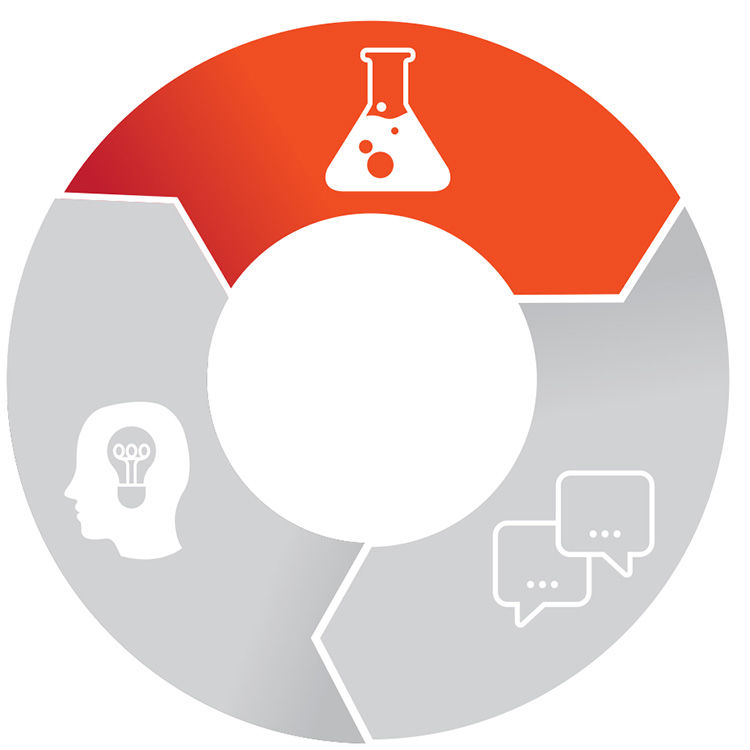
There is an increasing body of evidence that students learn more and perform better when they are actively engaged with the material they are learning than they do in a passive learning environment.1
Practical labs are designed to be exploratory in nature and incorporate elements of active learning through hands-on, real-life data acquisition. By recording and analyzing their own data, students are encouraged to learn from real-life experiences and apply what they have learned to everyday life.
Social aspects of a lab:
For students, labs provide an opportunity to affirm or correct any assumptions they might have about the course, and form important social bonds and support networks with their peers - a key factor contributing to lower student dropout rates.2,3
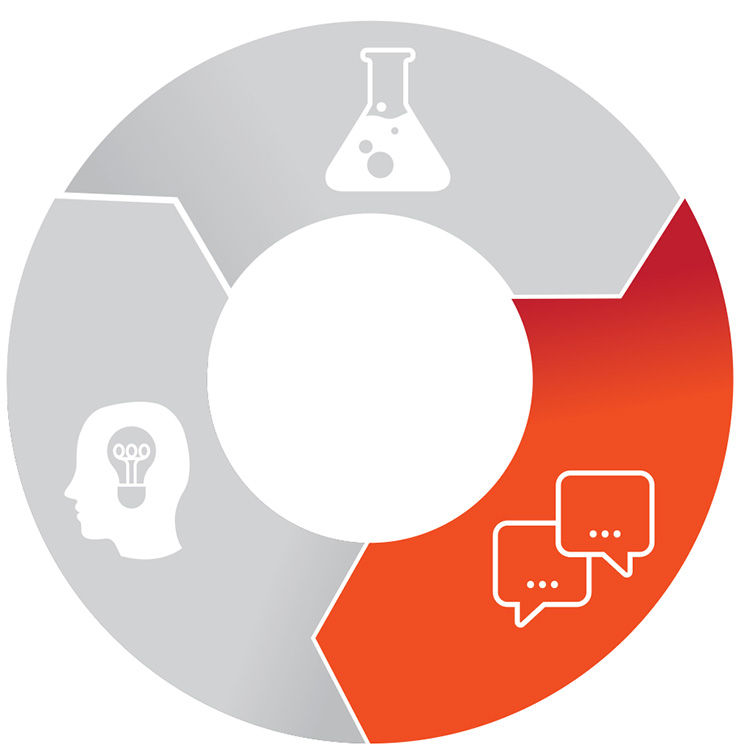
For educators, labs are an opportunity to build rapport and match names to the faces in the lecture theater.
They are also a fantastic opportunity for educators to improve their own teaching. Difficult concepts can be explained using more conversational language, and through back-and-forward dialogue, educators may identify and fix any misconceptions.
Psychological aspects of a lab:
Psychologically, labs act as an intermediate step to support and guide students to bridge the gap between theory and practice. They foster an environment where students can build their scientific skills in a supportive way, with the help of their peers and teachers.
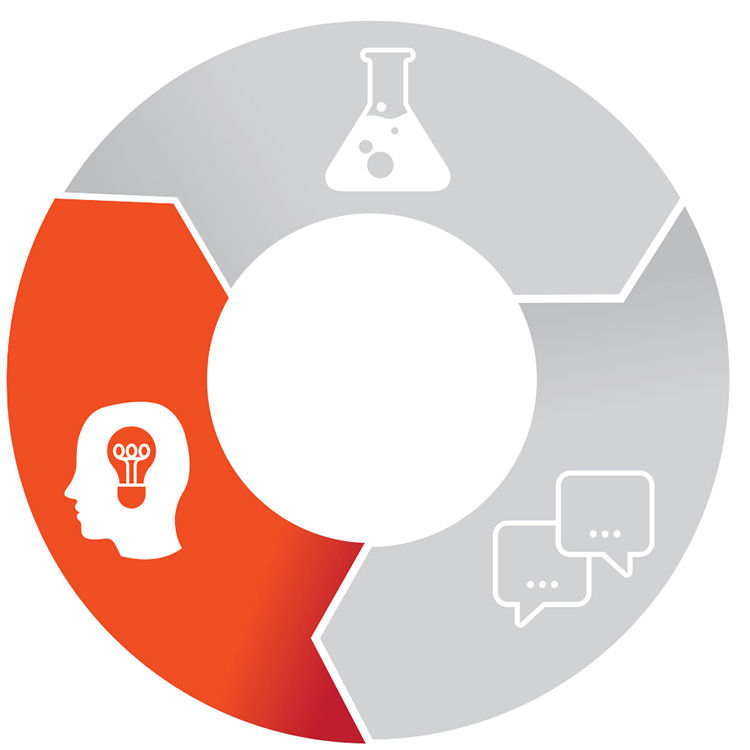
The informal nature of labs means students feel safe to ask what they perceive to be dumb questions - but in fact, are often struggle points for many members of the class. Without this open communication, it can be difficult for educators to identify where students are struggling or require extra help.
Options for future-proofing your course in the Coronavirus Era
Many educators are still in a state of limbo, not knowing whether they will eventually return to a traditional lab set-up or need to incorporate aspects of remote learning into their course curriculum. Ideally, they need a solution that is flexible and adaptable while still maintaining some of these key physical, social and psychological components of a lab.
Related: Future-proofing, fast: How Ed Merritt (Southwestern University) moved his lab-based course online »
Lt + Lt Sensors - A flexible, hands-on teaching solution for human physiology labs
Lt Sensors are our latest USB biosignal sensors, designed to be a cost-effective, portable, and easy to use DAQ solution that students can use to record their own biological signals in face-to-face or remote learning environments.
The sensors are designed to be used with our online learning platform Lt - creating an integrated teaching solution with all the software, hardware, and content you need to teach your human physiology course.
There are eight Lt Sensors in total, measuring a wide range of biosignals including biopotentials (ECG, EMG, EOG, and EEG), blood pressure, and respiratory rate. To view all eight sensors, click here.
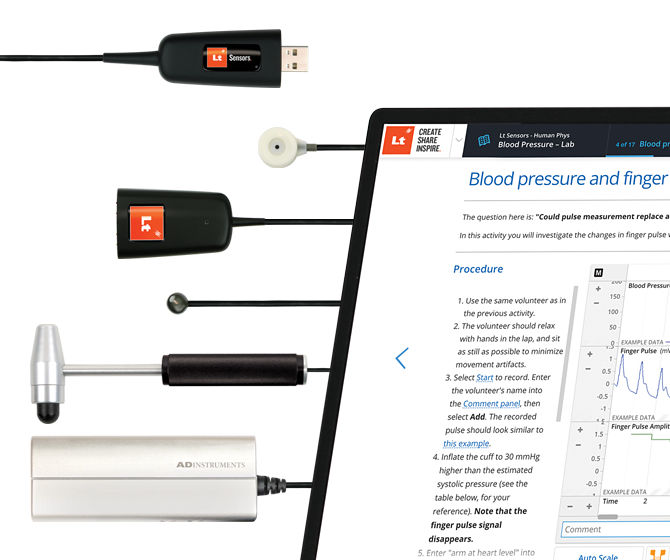
The sensors work specifically with our Lt Sensor Human Physiology Collection featuring 23 pre-made, customizable lessons with a combination of tutorial(s), pre-lab prep, and a lab. Each media-rich lesson has been expertly created by our team of instructional designers, covering introductory and advanced concepts in cardiovascular, respiratory, muscle, and kidney physiology.
See inside the Lt Human Physiology Collection »
How can Lt + Lt Sensors help you future proof your course?
One of the key benefits of Lt Sensors is the greater flexibility in their use case. Lt Sensors, in combination with our online learning platform Lt, provides a cost-effective and versatile solution for delivering hands-on and engaging labs either in face-to-face or remote learning environments, with no additional costs.
Lt + Lt Sensors for Face-to-Face Learning:
Lt + Lt Sensors are a great entry-level option for undergraduate physiology students who are new to data acquisition. Lt’s intuitive and modern interface is visually engaging and easy to navigate. As students work through the lessons, they are prompted to record their own biological signals directly into Lt using the Lt Sensors, making scientific theory engaging, relevant, and real.
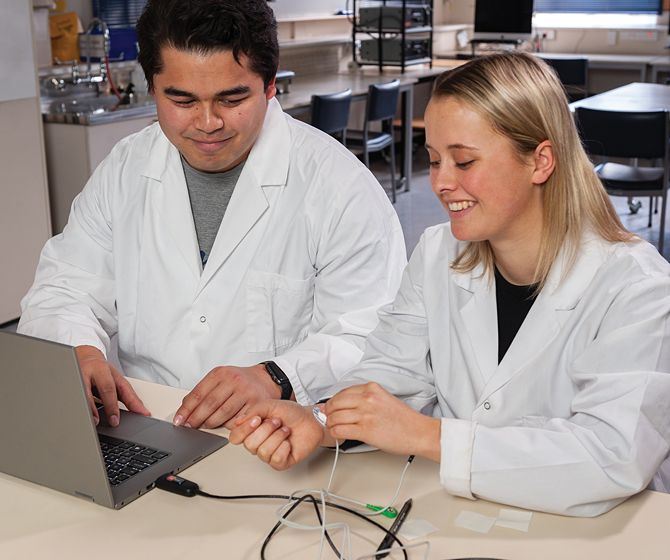
The small and portable nature of Lt Sensors means you can easily meet social distancing requirements within your labs as you're no longer restricted by bulky, fixed positioned hardware that's often required in a traditional lab setup. With Lt Sensors, you can easily run experiments in smaller groups and in different locations.
Each lesson includes formative assessments with grading and analytics, allowing you to keep track of student progress and monitor where students may be struggling with certain concepts. Modifying the content within each lesson is easy, you can simply drag and drop a range of content types including video, audio, images, quizzes, and text directly into your lessons using Lt's easy authoring functionalities.
Lt + Lt Sensors for Distance Learning:
Lt is an online learning platform that can be accessed anytime, anywhere - all you need is a device with an internet connection. Provided the students can take the required Lt Sensors home, they can simply plug the sensors into a windows-based laptop or PC and begin recording their own biosignals directly into Lt. It’s that simple.
To help maintain social connectivity in remote learning situations, Lt + Lt Sensors can be used in combination with Zoom or Microsoft Teams. Students can log in and work through the labs together using Lt's group work option, helping to maintain those important social interactions over video conferencing, while still accommodating for social distancing.
If taking the Sensors home is not an option, Lt has the added benefit of example data. Lt's pre-recorded sample data can be switched on automatically in situations where DAQ isn't available, allowing students to observe and analyze the data as they would in a normal lab set-up.
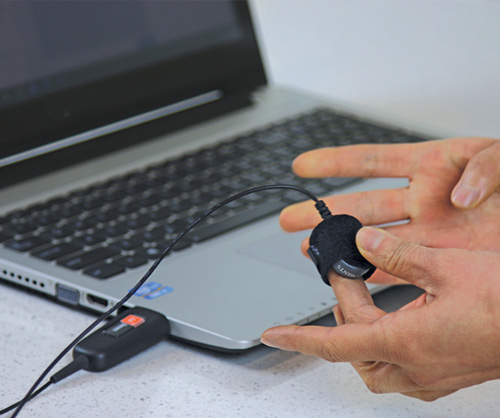
Related: Tips for successfully teaching practical labs in an online environment »
Together, Lt + Lt Sensors provides you with a complete, integrated teaching solution with all the content, hardware, and software you need to deliver hands-on and engaging labs - whether that be in a face-to-face or distance learning environment.
Having the flexibility to adapt your lessons to suit different learning situations ensures you can continue to provide an authentic hands-on learning experience even when constrained to remote learning.
To find out more about Lt Sensors or to request a quote, please visit our Lt Sensor webpage or get in contact with your nearest Support Representative!
Additional resources for educators:
2000 + Essential Diagrams for your Physiology Course »
COVID19: Lab Equipment Sterilization Guide »
10 Tips for Teaching Online – How to teach remotely and keep your students engaged »
Talking Teaching: How to Teach Anatomy Remotely »
References:
1. Deslauriers, L., McCarty, L. S., Miller, K., Callaghan, K., Kestin, G. (2019). Measuring actual learning versus feeling of learning in response to being actively engaged in the classroom. PNAS, 116(39), 19251-19257. https://doi.org/10.1073/pnas.1821936116
2. Ahmad, C. N. C., Osman, K., Halim, L. (2010). Physical and psychosocial aspects of science laboratory learning environment. Procedia - Social and Behavioral Sciences, (9), 87-91. https://doi.org/10.1016/j.sbspro.2010.12.120
3. Ahmad, C. N. C., Osman, K., Halim, L., Noh, N. M. (2014). Predictive Relationship between Physical and Psychosocial Aspects of Science Laboratory Learning Environment among Secondary School Students in Malaysia. Procedia - Social and Behavioral Sciences, (116), 158–162. https://doi.org/10.1016/j.sbspro.2014.01.185
